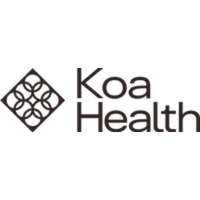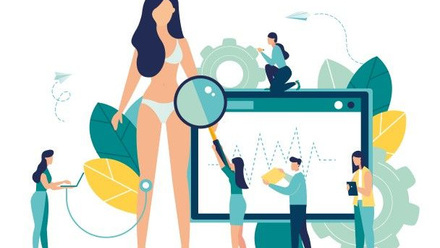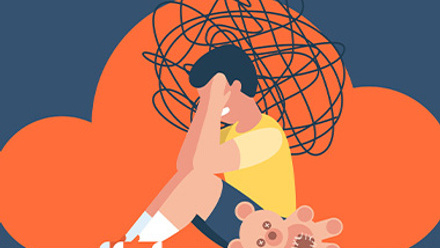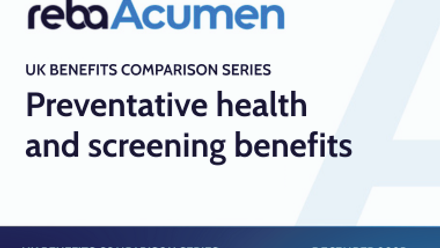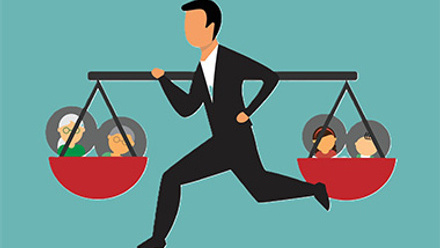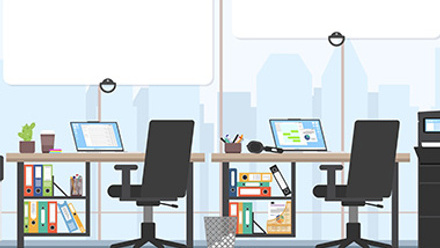Three ways to help beat workplace stress and why wellbeing begins at home for HR departments
Human resources teams have a tough gig. They have to juggle short-term priorities with long-term strategic thinking, put out workplace fires and even play peacemaker. And that’s without mentioning constantly changing regulations, lengthy hiring processes and so much more.

And over the past two years, HR departments’ workloads have been even more intense and high-stakes, as they struggle to ensure staff are safe, well and engaged with their work during a global pandemic.
Workplace stress is something many HR leaders see as unavoidable. Too often, it’s considered part and parcel of a critical, high-stakes job. But when this stress and the resulting poor mental wellbeing persist without relief, they may lead to burnout.
According to the World Health Organization, burnout is an occupational phenomenon (not a medical condition) defined by three main characteristics: emotional exhaustion, cynicism towards work, and reduced professional efficacy.
Are Human Resource teams more susceptible to burnout?
Even while organisations continue to adjust to the new ‘normal’, HR has helped teams come together, building new (and improved) company cultures and redistributing people, technology and belongings. Working with intense reactivity and constant change, long days have become longer, and the intensity and volume of work have only increased, as people teams everywhere struggle to attract and retain talent.
Working in HR is an ongoing balance of being people-oriented and business-oriented, and constantly switching between the two can be exhausting, especially when tasks are time-sensitive and high-intensity. In a type of work where you’re dedicated to doing for others, it’s all too easy to neglect self-care and ignore the signs that you’re stressed and overextended.
How to build back your wellbeing
Reduce the impact of long-term stress on your body with these quick techniques.
1. Check in with your body
Rushing from task to task and meeting to meeting keeps you ‘in your head’, focusing on tasks that need to get done rather than what your body needs or how it is feeling. Over the course of a crowded day, you may build up and store stress in your body. You might notice your shoulders are tense, your neck is painful, or your stomach is sore. Or maybe you're already taking over-the-counter medication for a headache.
During your busiest days, make an extra effort to check in between meetings or work tasks. What does your body need? Water, food, a bathroom break or a quick stretch? A short breathing routine can help you reconnect with your body and reduce some of that build-up of stress leading to headaches, sore stomachs or time off work.
2. Share with others
A crucial part of wellbeing is feeling connected and supported by others. This can be difficult in a traditionally supportive role such as HR. When it’s your job to support so many others, it’s vital you also receive support.
Whether it’s a chat with a fellow work colleague, a trusted friend, mentor or coach, make sure you have prioritised time to offload and talk through what is on your mind in a confidential and safe space.
3. Make time for recovery
HR staff are traditionally known to be fantastic at promoting booking time off for their workforce. Lead by example and ensure that you are encouraging your team to take time off with both words and actions (for example, taking your annual leave before it expires).
And when you do take time off, make sure you really switch off and disconnect to recover. You are technically still ‘at work’ if you’re thinking about work. Properly relax and recover by planning activities that you enjoy, that keep your body and mind occupied, helping you to re-energise and be at your best when you return to work.
As an HR practitioner, it’s key to remember that you can’t take care of your team if you don’t first take care of yourself.
Support your HR team
To truly support mental health for all, organisations will need to make changes to organisational culture and tackle pain points for HR teams, such as high turnover and excessive workload. However, systematic organisational change can take years.
Take action and avoid burnout in the short term by providing inclusive and accessible support for your people team. Digital-first, evidence-based solutions can help organisations ensure all of their workers (HR included) have access to the tools to take care of their health and wellbeing, whenever and wherever they need them.
It’s been a tough two years – and people teams have borne the brunt of the stress while moving mountains to take care of their teams. As they continue to influence the design and culture of present and future workplaces, they’re also in a place to help resolve many of the issues that are behind work-place stress and burnout. But they can only help others if they first help themselves.
To find out more about burnout and what your organisation can do to address it, access our Burnout Pocket Guide.
The author is Nicola Hemmings, workplace scientist at Koa Health.
This article was provided by Koa Health.
Supplied by REBA Associate Member, Koa Health
At Koa Health, we believe digital mental health solutions are the answer to mental health issues.

